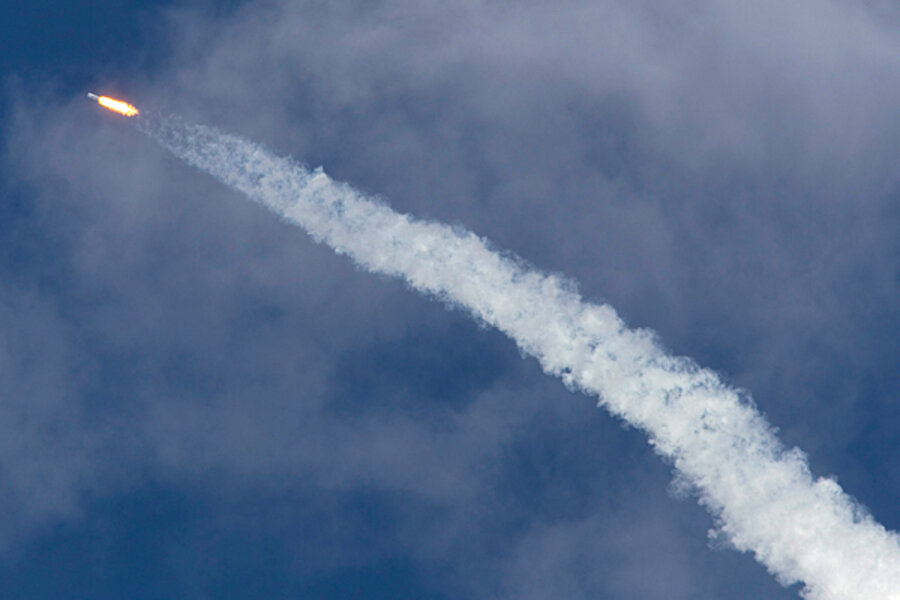SpaceX launch: Falcon 9 powers into orbit
Loading...
| Washington
Falcon 9 made it into space – and that means prospects for the Obama administration’s space-lift plans may have soared upward as well.
The Falcon 9, a new commercial rocket developed by Space Exploration Technologies (SpaceX), roared up from Cape Canaveral Air Force Station, Fla., on Friday afternoon after several launch delays. Nine minutes into its flight, it achieved low-Earth orbit as planned, according to SpaceX executives.
The White House is counting on commercial firms such as SpaceX to carry cargo and even astronauts up to the International Space Station in years to come. That would enable the National Aeronautics and Space Administration to cut back its own expensive rocket-development efforts.
NASA administrator Charles Bolden thus was quick to congratulate the SpaceX team on their apparent success.
“SpaceX’s accomplishment is an important milestone in the commercial transportation effort and puts the company a step closer to providing cargo services to the International Space Station,” Mr. Bolden said in a statement.
Prior to the SpaceX launch, tension rose by the hour at Cape Canaveral. First an anomaly in a data feed forced a postponement. Then a boat wandered into an exclusion zone.
The Falcon 9 finally ignited and roared upward in midafternoon. Its first stage burned successfully and separated. The second stage ignited on schedule and powered into orbit the rocket’s payload – a mock-up of SpaceX’s Dragon capsule, according to the company.
During a conference call with reporters Thursday, SpaceX CEO Elon Musk said he would consider the flight a success even if only the first stage worked correctly. Falcon 9 appears to have surpassed that low expectation.
“All in all, this has been a good day for SpaceX,” launch commentator Robyn Ringuette said from the firm’s California headquarters.
Mr. Musk, the driving force behind SpaceX, is a South African-born engineer who became a multimillionaire as a co-founder of the online-payments firm PayPal. The Tesla electric sports car is another of his projects.
The Falcon 9 is named for the Millennium Falcon, Han Solo’s spacecraft in the “Star Wars” movie epics. SpaceX has invested more than $400 million in the Falcon 9 and in Falcon rockets.
If SpaceX, Orbital Sciences, and other commercial firms are able to shoulder the space-lift burden, NASA could get out of the rocket-building business, canceling its current Ares 1 development effort. That is the Obama administration’s plan, in any case.
Some in Congress are unhappy with this idea – and former Apollo astronauts such as Neil Armstrong and Eugene Cernan have questioned whether any entity but the government has the money and resources to devote to safely putting people in space.
Musk insists that in the current budget environment, new government-funded rocket efforts won’t be proceeding, anyway. Unless the private sector steps up, the United States might fall further and further behind other nations.
“Commercial space is not just a path forward. It’s the only path forward,” Musk told reporters Thursday.
• Material from the Associated Press was used in this report.
Related:





